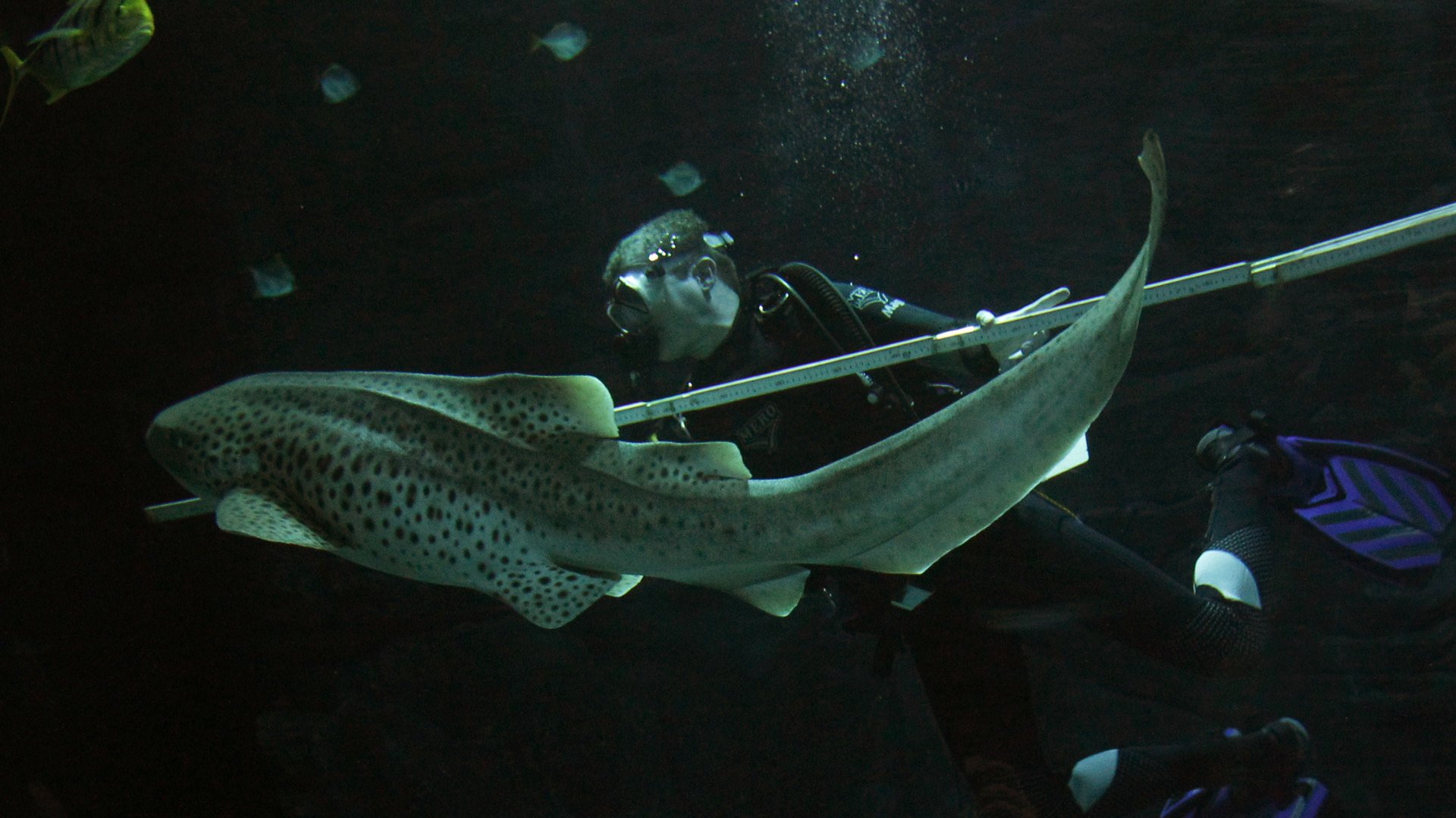There’s a whole group of animals who don’t need males to reproduce
Who needs men, anyway?


Who needs men, anyway?
Apparently not leopard sharks. Earlier this week, the Reef HQ Great Barrier Reef Aquarium in Queensland, Australia, welcomed three leopard shark pups from a mother who had no contact with a male. The aquarium confirmed the births for Quartz.
How is this possible? It’s a process called parthenogenesis (pdf), i.e. virgin birth, and we know it happens among some types of birds, snakes, and lizards. In fact, it probably happens in nature all the time, says Warren Booth, an evolutionary biologist at the University of Tulsa in Oklahoma.
“Cloning is when you produce an exact copy of the mother,” Booth says. “Virgin birth is slightly different. Parthenogenetic offspring are half-clones of the mother.”
Here’s how it works: When some kinds of animals—really, any non-mammal female with a spine and a jaw—reproduce, they make egg cells that have half of their genetic information, just as mammals do. But in parthenogenesis, instead of fusing the egg cell with DNA from a male cell, these cells either double their own genetic information, or pair up with another egg cell that has a different half of genetic information. It’s sort of like two eggs fusing together to make an embryo—something that would be impossible in mammals like us.
As cool as half-clones sound, they aren’t particularly healthy versions of these animals. “What’s happening is you’re producing a very highly inbred organism,” Booth says.
One of the advantages of sexual reproduction is that offspring get a fresh mix of genetic information, which gives genetic defects a shorter generational shelf-life. Without that extra slosh of new DNA, chances of inheriting a harmful mutation go up. Booth says parthenogenesis-born snakes are often unhealthy. In recently evolved snake species, like pit vipers and water snakes, virgin-birth offspring are often stillborn with fatal deformities, or die suddenly at a young age.
Among mammals, such virgin births are impossible: Mammalian genetic material doesn’t get the signal to replicate and grow unless there’s material from both an egg and a sperm present. Code from a mother’s DNA signals to code from a father’s DNA, and vice versa, a phenomenon called genetic imprinting.
Booth’s lab is still trying to unravel the mystery of parthenogenesis. Some have theorized that environmental triggers are at play—like a lack of males to mate with—but scientists have identified virgin births in areas where males are just as abundant as females (pdf).
“The fact that we’re seeing it in captive animals is just a byproduct [of the fact] that it’s happening,” Booth says. “I think personally it’s a much more common event.”